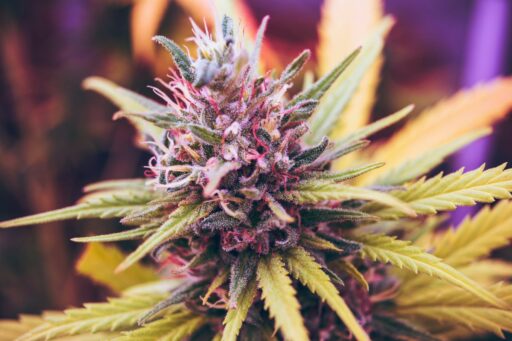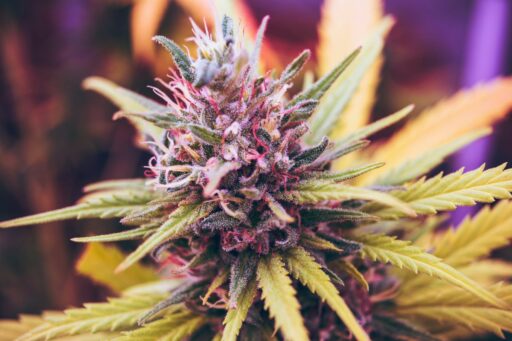The landscape of marijuana legalization in the United States has evolved significantly by 2020, with a patchwork of policies reflecting varying degrees of acceptance. This article provides a comprehensive overview of the progress in marijuana legalization across different states, the implications for workplaces, the economic ramifications for the burgeoning cannabis industry, and the regulatory landscape that governs this complex issue. Additionally, it touches upon the advocacy efforts and public opinion surrounding the legalization movement.
Key Takeaways
- A significant number of states have legalized marijuana for medical and/or recreational use, reflecting a shift in public perception and policy.
- Workplace safety and employer policies are adapting to the legalization of marijuana, balancing legal rights with health and safety concerns.
- The economic impact of marijuana legalization has been substantial, with market growth and sales data indicating a lucrative industry facing regulatory challenges.
- Regulatory bodies like the OLCC are actively enforcing compliance, with license suspensions and relaunches of programs like the Chance-to-Purchase initiative.
- Advocacy groups and public opinion are influential in shaping marijuana policies, as seen in grassroots movements and reactions to proposed regulations.
Mapping Marijuana Legalization

State-by-State Legal Status
As the United States grapples with the evolving legal landscape of marijuana, a diverse tapestry of regulations has emerged across the country. The status of marijuana legalization varies widely from state to state, with some embracing both medical and recreational use, while others remain steadfast in prohibition.
The following table provides a snapshot of the legal status of marijuana in various states as of 2020:
| State | Medical | Recreational |
|---|---|---|
| State A | Yes | Yes |
| State B | Yes | No |
| State C | No | Yes |
| State D | Yes | Yes |
| … | … | … |
This table reflects the complex and often fragmented approach to marijuana policy in the U.S., highlighting the need for clear and accessible information for citizens and policymakers alike.
As the debate continues, it is crucial to monitor the shifting policies and the implications they carry for individuals and communities.
Medical vs. Recreational Use
The distinction between medical cannabis and adult-use (recreational) weed is a legal classification rather than a difference in the substances themselves. Both forms of marijuana serve different purposes and are regulated under varying state laws. Medical marijuana is often prescribed to alleviate symptoms of chronic conditions, while recreational use is for personal enjoyment.
In the context of the workplace, the legalization of both medical and recreational marijuana presents challenges. Employers must navigate safety concerns and impairment issues, as the CDC highlights marijuana as the most used illicit drug. A significant portion of the workforce admits to using marijuana, with 18% of adult users in full-time employment and 21% in part-time jobs.
The legal landscape is complex, with states adopting different approaches to regulation. Employers are tasked with balancing compliance with state laws and maintaining a safe work environment.
Adverse events related to marijuana use in the workplace underscore the need for clear policies. Employers must consider the implications of both medical and recreational marijuana use among their staff.
Federal Stance and State Compliance
Despite the patchwork of state-level legalization, the federal government’s stance on marijuana remains unchanged: cannabis is still classified as a Schedule I substance under the Controlled Substances Act. This classification puts cannabis on par with drugs like heroin and LSD, which are deemed to have a high potential for abuse and no accepted medical use.
However, recent legislative efforts indicate a shift may be on the horizon. The most substantial cannabis legislation from 2023 would legalize cannabis at the federal level and set forth a framework for consistent regulation across the states. This move could reconcile the current dissonance between state and federal laws, providing clarity and uniformity for states that have already legalized marijuana in some form.
Compliance with federal law remains a complex issue for states that have legalized marijuana. Businesses and consumers alike navigate a legal landscape that is often contradictory and fraught with uncertainty.
State compliance with federal regulations is a delicate balancing act. While states continue to push the boundaries of marijuana legalization, they must also consider the implications of federal law, which can affect everything from banking to law enforcement.
Workplace Implications of Legalization

Safety Concerns and Impairment Issues
JSON
Employer Policies and Drug Testing
In the wake of marijuana legalization, employers have had to navigate the complex landscape of drug policies and testing. Employers must balance legal compliance with maintaining a safe work environment. To address this, many have turned to implementing comprehensive substance use policies.
The Centers for Disease Control and Prevention (CDC) recommends creating a recovery-supported workplace to prevent addiction and support those seeking treatment. Key steps include:
- Communicating the policies with every employee
- Training all supervisors and employees
- Evaluating the workplace to identify factors that may lead to substance misuse
- Promoting a healthy work environment
- Reducing stigma associated with addiction
- Informing employees of available recovery resources
Employers are encouraged to utilize employee assistance programs and offer health and well-being programs to support employees in recovery.
It is crucial for leaders to set clear expectations regarding drug and alcohol use, with human resources and supervisors playing pivotal roles in policy communication and enforcement.
Legal Rights and Responsibilities
With the legalization of marijuana, both employees and employers must navigate a complex legal landscape. Employees are responsible for understanding the laws and policies related to substance use and their job. This includes being aware of the legal status of cannabis in their state and any workplace rules that apply.
Employers, on the other hand, play a critical role in setting expectations and maintaining a safe work environment. Leaders and human resources staff are tasked with clearly communicating the company’s stance on drug and alcohol use. Supervisors must enforce these policies while also advocating for employees who may need assistance.
Medical cannabis is legal in 38 states, and about half of these have policies addressing anti-discrimination for medical cannabis patients. It’s essential for both parties to be informed about their rights and responsibilities to ensure compliance and avoid potential legal issues.
Economic Impact and Business Conditions

Market Growth and Sales Data
The trajectory of the legal marijuana market has shown a steep upward trend. Sales of legal recreational cannabis are expected to soar in the coming years, with projections indicating a potential market size of nearly $57 billion by 2028. This growth is not only indicative of increased consumer demand but also of the expanding legalization landscape across the United States.
The economic footprint of the cannabis industry is further underscored by the diversity of its revenue streams. From the sale of raw flower to edibles and concentrates, the market is diversifying, and businesses are innovating to capture new customer segments. Below is a snapshot of the sales data:
| Year | Projected Sales (in billion USD) |
|---|---|
| 2022 | 29.7 |
| 2023 | 34.5 |
| 2024 | 40.2 |
| 2025 | 46.8 |
| 2026 | 53.6 |
| 2027 | 57.0 |
The figures reflect a robust industry, with a compound annual growth rate that outpaces many traditional sectors. This performance is a testament to the dynamic nature of the cannabis market and its ability to adapt to regulatory and consumer trends.
Licensing and Regulation Challenges
The landscape of marijuana licensing and regulation is fraught with complexities. The introduction of the CAMP system by the OLCC represents a significant shift in how marijuana businesses are licensed and managed. The first phase, focusing on marijuana licensing, went live in March, signaling a new era for compliance and oversight.
The transition to new regulatory systems and processes often brings about a series of challenges for both regulators and industry participants. Ensuring a smooth changeover is critical to maintaining business continuity and legal compliance.
Businesses face a multitude of hurdles when navigating the licensing landscape:
- Understanding and adapting to new regulatory frameworks like CAMP.
- Keeping abreast of changes in compliance activities and enforcement actions.
- Testifying on business conditions and participating in programs like Chance-to-Purchase.
The OLCC’s enforcement actions, such as the suspension of a marijuana producer’s license, underscore the importance of strict adherence to regulations. As the industry evolves, so too must the strategies for managing regulatory compliance.
Testimonies from Industry Representatives
The cannabis industry is evolving, and with it, the perspectives of those at its helm are crucial for shaping policy and understanding market dynamics. Industry leaders from companies like Cresco Labs and Trulieve have shared their insights with lawmakers, emphasizing the need for clear regulations and support for business growth.
The collective experience of these representatives provides a unique vantage point on the challenges and opportunities within the legal cannabis sector.
Representatives have advised on a range of issues from market expansion to regulatory compliance. Their testimonies reflect a deep understanding of the industry’s intricacies and a commitment to fostering a responsible and sustainable market.
Table: Key Points from Industry Testimonies
| Company | Focus Area | Key Advice |
|---|---|---|
| Cresco Labs | Market Expansion | Advocate for clear regulations |
| Trulieve | Regulatory Compliance | Support for business growth |
| PharmaCann | Product Safety | Emphasize consumer protection |
| INSA | Innovation | Encourage research and development |
Regulatory Actions and Compliance

OLCC Enforcement and License Suspensions
The Oregon Liquor and Cannabis Commission (OLCC) plays a pivotal role in maintaining the integrity of the state’s cannabis industry. In 2023, the OLCC’s marijuana compliance group processed a significant number of compliance cases. A detailed review of the year’s activities reveals a robust enforcement effort, with many cases resulting in no action, indicating a high level of compliance among licensees.
The OLCC’s enforcement actions are critical in upholding the regulatory framework that governs marijuana production and sales. These actions ensure that only qualified and compliant operators participate in the market.
The following table summarizes the outcomes of the compliance cases handled by the OLCC in 2023:
| Outcome | Number of Cases |
|---|---|
| Processed | 3,731 |
| Closed with No Action | 2,357 |
| Enforcement Actions | 204 |
This data underscores the OLCC’s commitment to a fair and orderly market. The Commission’s proactive approach includes not only enforcement but also educational initiatives aimed at preventing non-compliance.
Compliance Reviews and Program Relaunches
The regulatory landscape for cannabis is ever-evolving, with compliance reviews serving as a critical component for maintaining industry standards. The Commission’s review of 2023 Compliance Activity highlights the ongoing efforts to ensure adherence to regulations. Notably, the relaunch of the Chance-to-Purchase program was outlined, marking a significant step in refining the process of cannabis distribution.
In the wake of these reviews, the OLCC has taken decisive action where necessary. For instance, a marijuana producer’s license was suspended after marijuana was found at a private residence, underscoring the importance of compliance even beyond commercial premises.
The new OLCC online licensing system is set to enhance transparency and efficiency. Demonstrated to Commissioners earlier this year, the first phase of the CAMP licensing system is expected to go live in March, signaling a move towards streamlined operations within the industry.
The Commission’s actions are not isolated incidents but part of a broader strategy to foster a responsible and compliant cannabis market. As the industry matures, these reviews and program relaunches are essential for both regulatory bodies and cannabis businesses to navigate the complex regulatory environment successfully.
Public Response to Regulatory Changes
The regulatory landscape for marijuana has seen significant changes, often eliciting strong public reactions. Public meetings and open forums have become a common platform for stakeholders to voice their opinions and concerns. These gatherings are crucial in shaping the direction of regulatory adjustments and ensuring that the voices of the community are heard.
In response to regulatory updates, a variety of public sentiments have been observed:
- Support for more transparent and accessible information on regulations.
- Calls for clearer guidelines on compliance for businesses.
- Concerns over the impact of regulatory changes on small operators.
- Advocacy for equitable enforcement practices.
The public’s engagement in regulatory processes reflects a growing awareness and involvement in the governance of marijuana legalization.
The dissemination of information, such as product recall notices and compliance guidelines, is vital to maintaining an informed public. Regulatory bodies have made efforts to provide resources and educational materials to assist stakeholders in navigating the complex regulatory environment.
Advocacy and Public Opinion

Grassroots Movements and Petitions
Grassroots movements have played a pivotal role in shaping public opinion and influencing legislative changes regarding marijuana legalization. Activists and organizations, like the Marijuana Policy Project, have been instrumental in these efforts. They provide resources on how to write effective petitions and educate the public on their right to petition for change.
The process of starting a petition involves several steps:
- Identifying a clear and specific goal
- Understanding the legal framework
- Gathering support from the community
- Submitting the petition to the relevant authorities
These movements often start at a local level, with individuals and groups mobilizing to address the issues most pertinent to their communities. For instance, in South Carolina, there is a current push to legalize medical cannabis, highlighting the ongoing efforts across various states.
The success of these petitions can lead to significant policy shifts, demonstrating the power of collective action in the democratic process.
Consumer Demand for THC Products
The consumer demand for THC products has been on a steady incline, reflecting a shift in public perception and an increased awareness of the potential benefits associated with cannabis-derived products. Market trends indicate a growing preference for alternative consumption methods, such as edibles and beverages, over traditional smoking.
In response to this demand, a variety of hemp-based THC beverages have emerged, offering consumers a different experience. These products are often touted for their potential health benefits, including relief from conditions like chronic pain and anxiety. However, recent legislative proposals threaten to limit the availability of these products, sparking public outcry and mobilization.
The proposed ban on hemp-based THC beverages in Connecticut has ignited a significant grassroots movement. Advocates argue that not only do these products provide a safer alternative to smoking, but they also support local businesses and consumer choice.
The table below summarizes the public response to the proposed ban in Connecticut:
| Date Started | Signatures Collected | Next Goal |
|---|---|---|
| Feb 9, 2024 | 783 | 1,000 |
Impact of Proposed Bans on Hemp-Based Beverages
The movement against the proposed ban on hemp-based THC beverages in Connecticut highlights a significant clash between state legislation and consumer choice. The ban could potentially strip local alcohol retailers of an estimated $100 million in annual revenue, drawing from models of similar states. This figure underscores the economic stakes involved in such regulatory decisions.
- The ban contradicts the trend in other states where hemp-based beverages are legal and embraced.
- It may drive consumers to online markets, bypassing local businesses and increasing costs.
- Advocates argue that the ban limits personal freedom and access to products with health and recreational benefits.
The proposed legislation has sparked a grassroots movement, emphasizing the importance of consumer rights and the impact on local economies. The urgency of the petition against the ban reflects a broader concern over access to federally legal products and the potential repercussions for businesses reliant on their sale.
Conclusion
As the United States continues to evolve in its stance on marijuana, the landscape by 2020 showed a significant shift towards legalization, with numerous states adopting policies for medicinal and recreational use. However, this progress is not without its challenges, as evidenced by workplace safety concerns and regulatory complexities. The rise in marijuana-related workplace incidents underscores the need for clear guidelines and safety measures. Meanwhile, debates such as the proposed ban on THC beverages in Connecticut highlight the ongoing struggle to balance regulation with consumer access and market growth. The tot-up of states that have legalized marijuana by 2020 marks a pivotal moment in American drug policy, but it also opens up a complex web of social, legal, and economic issues that will require careful navigation in the years to come.
Frequently Asked Questions
What is the current federal stance on marijuana legalization?
As of the last update, marijuana remains illegal at the federal level in the United States, classified as a Schedule I substance under the Controlled Substances Act. However, many states have taken steps to legalize or decriminalize marijuana for medical or recreational use, which has led to a complex legal landscape.
How many states have legalized marijuana for recreational use by 2020?
By the end of 2020, 15 states and the District of Columbia had legalized marijuana for recreational use. This number has continued to grow as more states pass legalization measures.
What are some workplace safety concerns related to marijuana legalization?
Employers are concerned about impairment issues due to marijuana use, which can affect workplace safety and productivity. Studies have shown that marijuana use can lead to decreased attention, impaired decision-making, and slower reaction times, which are particularly problematic for safety-sensitive positions.
How has the legalization of marijuana impacted the economy and business conditions?
The legalization of marijuana has led to significant market growth and increased sales data. However, businesses face challenges with licensing, regulation, and compliance. Testimonies from industry representatives suggest a mix of opportunities and hurdles in the evolving legal cannabis market.
What role does the Oregon Liquor Control Commission (OLCC) play in marijuana regulation?
The OLCC is responsible for enforcing marijuana laws in Oregon, including license suspensions for non-compliance. The commission also oversees compliance activities, relaunches programs like the Chance-to-Purchase, and introduces new systems to streamline licensing processes.
Why is there a movement to stop the ban on THC beverages in Connecticut?
Advocates argue that the proposed ban on hemp-based THC beverages and full-spectrum CBD beverages in Connecticut is unnecessary and harmful. These federally legal products contain less THC than items available in Adult Use stores, and relegating them exclusively to these stores could restrict consumer access and choice.



